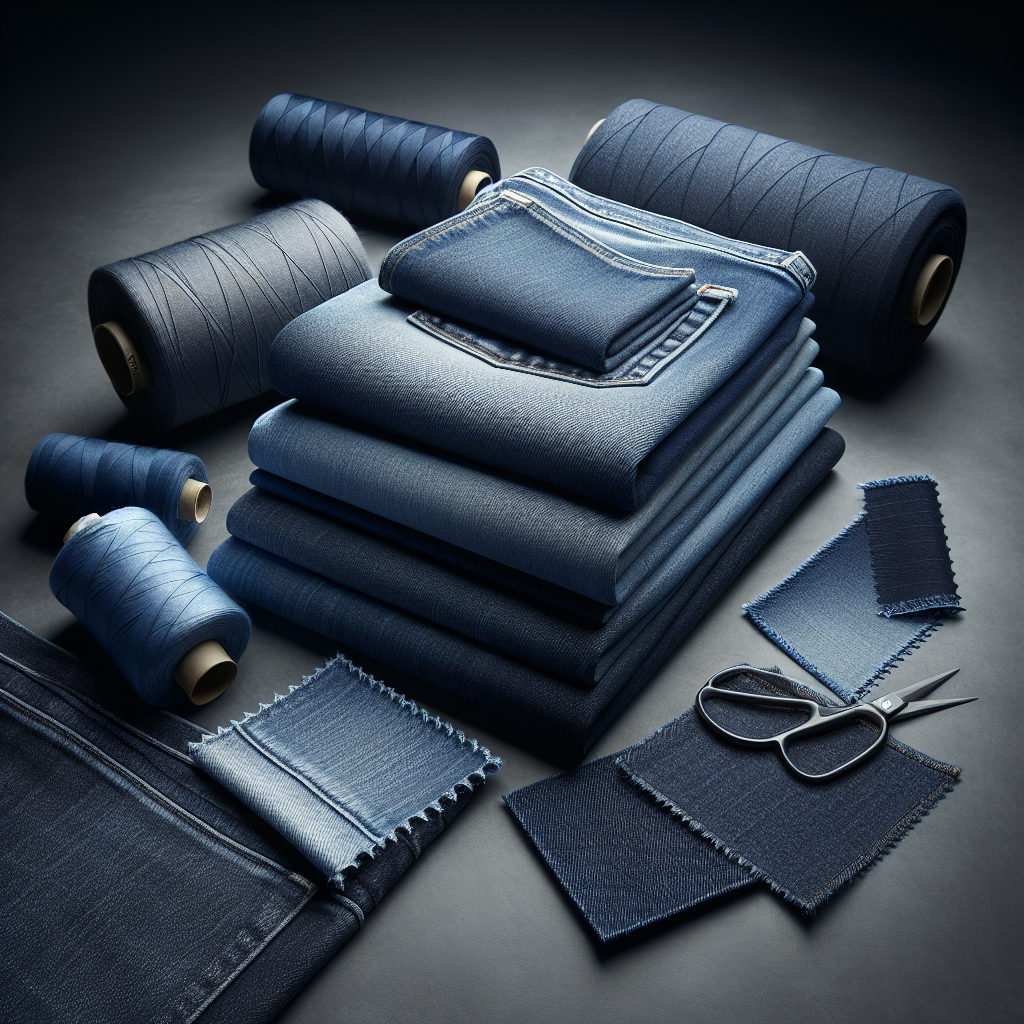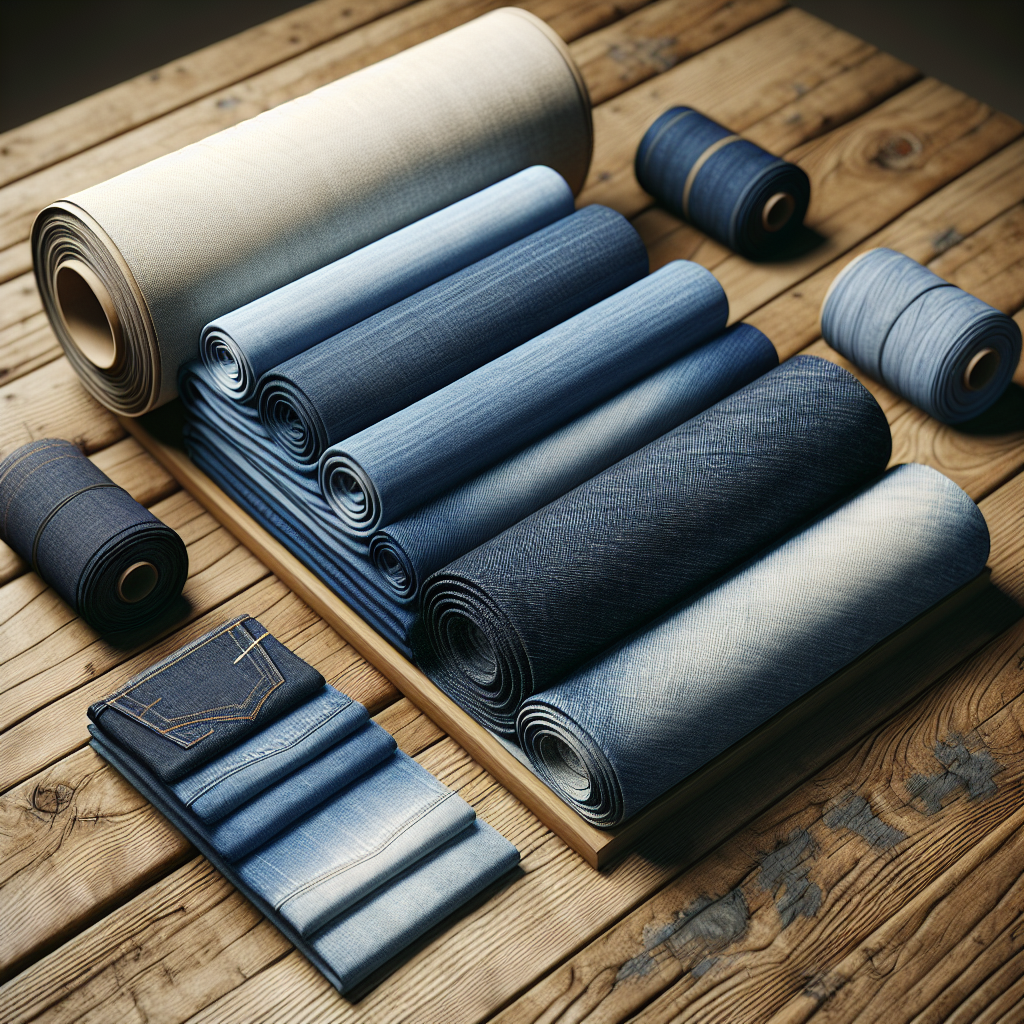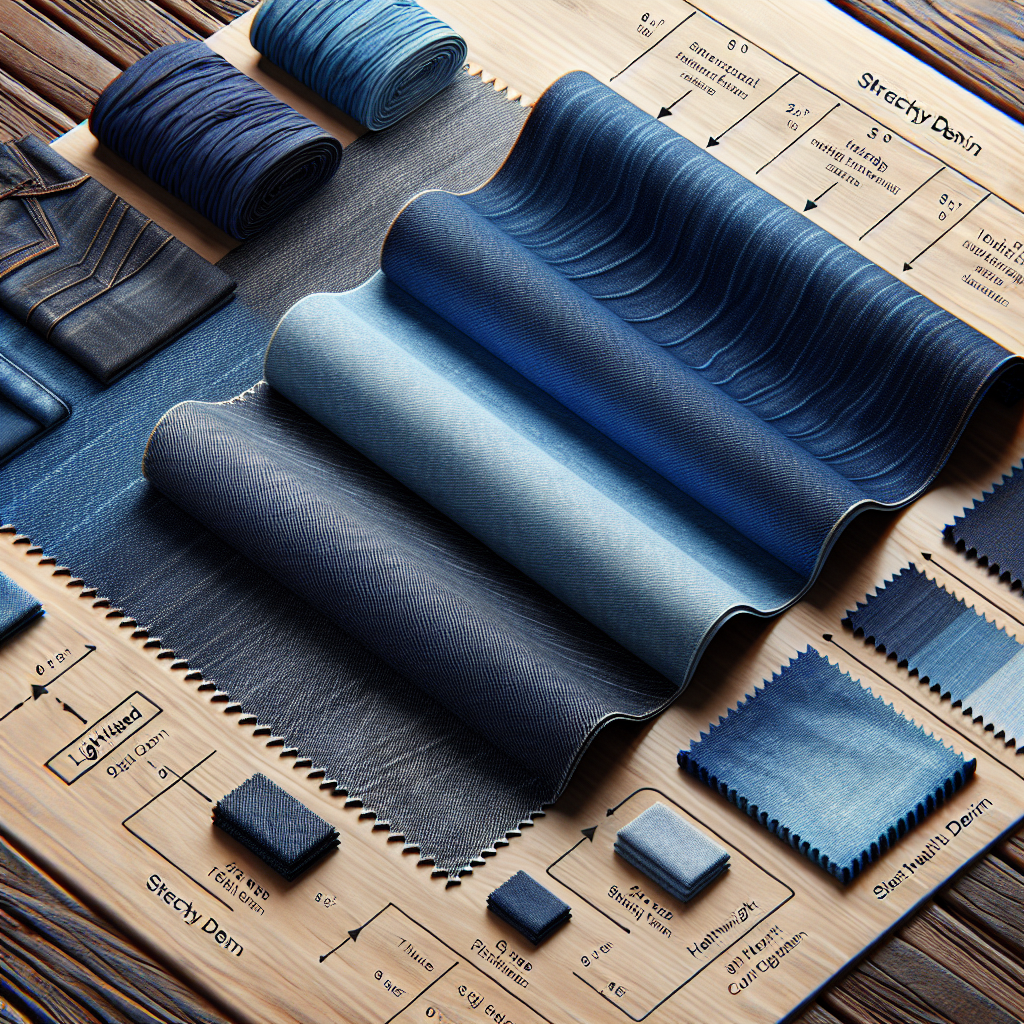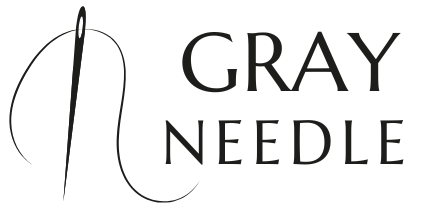Before diving into the top sewing tips for working with denim, it’s essential to understand the unique characteristics of denim fabric. Denim is a durable cotton twill fabric, known for its robustness and versatility. The distinct weave of denim creates a diagonal ribbing effect, which not only enhances its strength but also adds a stylish texture to your projects.
Denim comes in various weights, typically measured in ounces per square yard. Lighter weights, around 6-8 ounces, are ideal for shirts and summer wear, while heavier weights, like 12-15 ounces, are perfect for jeans and jackets. Familiarizing yourself with these weights is crucial, as it influences your choice of needle, thread, and sewing techniques.
Another important aspect is the fabric’s stretchability. While traditional denim is rigid, many modern variations include spandex or elastane, providing added comfort and flexibility. When sewing with stretchy denim, consider using a ballpoint or stretch needle to prevent skipped stitches and maintain the fabric’s integrity.
Finally, pay attention to the denim’s color and finish. Raw denim, for example, has not undergone any washing or distressing, making it a favorite for custom fading techniques. Pre-washed or stone-washed denim is softer and less likely to shrink, but it may require different handling during sewing.
Understanding these characteristics will empower you to select the right denim for your projects and achieve professional results. Visit our website to learn more and get started today! Click here.
Essential Tools for Sewing Denim

Equipping yourself with the right tools is crucial when tackling denim projects. Denim is a thick and sturdy fabric, and having the appropriate sewing tools can make all the difference in achieving smooth results. Here’s a list of essential tools you should have in your sewing arsenal:
- Heavy-Duty Needle: Choose a size 90/14 or 100/16 needle, specifically designed for heavy fabrics. These needles are strong enough to penetrate multiple layers of denim without breaking.
- Denim Foot: A walking foot or a denim foot helps guide the fabric evenly through your sewing machine, preventing puckering and ensuring precise stitching.
- Quality Thread: Use a strong polyester thread for durability, as cotton thread may not withstand the tension and wear of heavy denim. Opt for a thicker thread for added strength and visibility.
- Fabric Clips: Rather than traditional pins, use fabric clips to hold layers of denim together. Clips will not leave holes in the fabric and are more efficient for thick layers.
- Ironing Tools: A good iron and a pressing cloth are invaluable. Pressing seams flat helps achieve a professional finish and reduces bulk.
Having these essential tools at your disposal will ensure that you can sew denim with confidence and ease. Proper preparation can significantly enhance your sewing experience and lead to stunning finished projects.
Choosing the Right Stitch for Denim

When working with denim, selecting the right stitch is vital for both functionality and aesthetics. The unique properties of denim require specific stitching techniques to accommodate its thickness and durability. Here are some of the best stitching options to consider:
- Straight Stitch: This is the most common stitch used for sewing denim. It provides a strong seam that can withstand the fabric’s weight and stress. Make sure to use a longer stitch length (around 3 to 3.5 mm) to prevent puckering.
- Zigzag Stitch: This stitch is great for finishing raw edges and preventing fraying. It allows for some stretch, making it ideal for areas that may require flexibility, such as seams on fitted jeans.
- Triple Stitch: For added strength, especially in high-stress areas like the crotch or pockets, consider using a triple stitch. This stitch creates a thicker line and distributes tension more evenly.
- Flat-Felled Seam: This technique not only reinforces the seam but also provides a clean, professional finish. It’s perfect for denim garments where durability is key, such as jeans and jackets.
- Topstitching: Use topstitching to add decorative elements and enhance the garment’s durability. A contrasting thread color can elevate the design, giving your project a polished look.
Each of these stitches serves a specific purpose in denim sewing. Choosing the correct stitch not only improves the strength and longevity of your projects but also contributes to the overall aesthetic appeal.
Techniques for Handling Thick Denim Layers

Working with thick denim layers can be challenging, but with the right techniques, you can achieve professional-looking results. Here are some effective strategies to manage those bulky seams:
- Use a Walking Foot: A walking foot is essential when sewing multiple layers of thick denim. It evenly feeds the fabric through the machine, reducing the chances of shifting and misalignment.
- Increase Needle Size: Opt for a larger needle, such as a size 16 or 18, designed for heavy fabrics. This will help you pierce through the thickness without breaking the needle or damaging the fabric.
- Adjust Tension Settings: Before starting your project, adjust the tension settings on your sewing machine. A slightly lower tension can help prevent puckering and allow for smoother stitching through thick layers.
- Use a Heavy-Duty Thread: When sewing denim, using a heavier thread can enhance the durability of your seams. Look for polyester or cotton-wrapped polyester threads that are specifically designed for heavy fabrics.
- Pile Up the Layers Strategically: When sewing bulky seams, start from the edge and gradually move to the center. This technique helps distribute the thickness evenly and makes it easier to sew through multiple layers.
By implementing these techniques, you can effectively handle thick denim layers, ensuring your projects come together seamlessly and withstand the test of time.
Finishing Techniques for a Professional Look
Achieving a professional finish on your denim projects is essential for a polished appearance. Here are some key finishing techniques that can elevate your sewing skills:
- Topstitching: One of the hallmarks of quality denim garments is topstitching. Use a contrasting thread color to highlight your seams, providing both strength and visual appeal. A double needle can add an extra touch of detail and make your stitches stand out.
- French Seams: For a clean finish, consider using French seams, especially on lighter weight denim. This technique encases raw edges, preventing fraying and creating a more refined look on the inside of your garment.
- Bias Binding: If you prefer a quick and straightforward finish, using bias binding along the raw edges can add a pop of color while securing the fabric. This method is particularly useful on curved seams.
- Hem Techniques: For denim hems, consider using a blind hem stitch or a double-turned hem for durability and a neat finish. Ensure that the hem is pressed well to maintain its shape and appearance.
- Fraying Effects: Embrace the natural look of denim by intentionally fraying edges for a relaxed, vintage vibe. Use a seam ripper to gently pull threads from the raw edges for a stylish finish.
Incorporating these finishing techniques into your sewing projects will not only enhance the durability of your denim pieces but also ensure they look professionally made. With attention to detail, your garments will truly stand out.
Common Mistakes to Avoid When Sewing Denim

When working with denim, even experienced sewers can encounter pitfalls that can affect the quality of their projects. Here are some common mistakes to avoid to ensure a successful sewing experience:
- Using the Wrong Needle: Denim is a thick fabric that requires a specialized needle, such as a denim needle, which has a sharp point designed to penetrate heavy fabric. Using a standard needle can lead to skipped stitches or even needle breakage.
- Ignoring Fabric Grain: Always pay attention to the grain of the fabric. Cutting out patterns against the grain can lead to distortion when the fabric is worn. Make sure to align your pattern pieces according to the fabric’s grain for the best fit.
- Overlooking Seam Allowances: Denim can be unforgiving, so it’s crucial to follow the recommended seam allowances. If you’re using a thicker fabric, make sure to adjust your seam allowance accordingly to avoid bulk at the seams.
- Skipping Pre-Washing: Denim often shrinks when washed. Pre-washing your fabric helps to reduce this risk and allows you to see how the fabric behaves before you start your project.
- Neglecting to Use a Walking Foot: A walking foot helps to evenly feed the thick layers of denim through the machine, preventing shifting and puckering. Ignoring this can lead to uneven seams and frustrating sewing experiences.
By being mindful of these common mistakes, you can enhance your sewing projects and achieve a professional finish. Visit our website to learn more and get started today! Click here.

